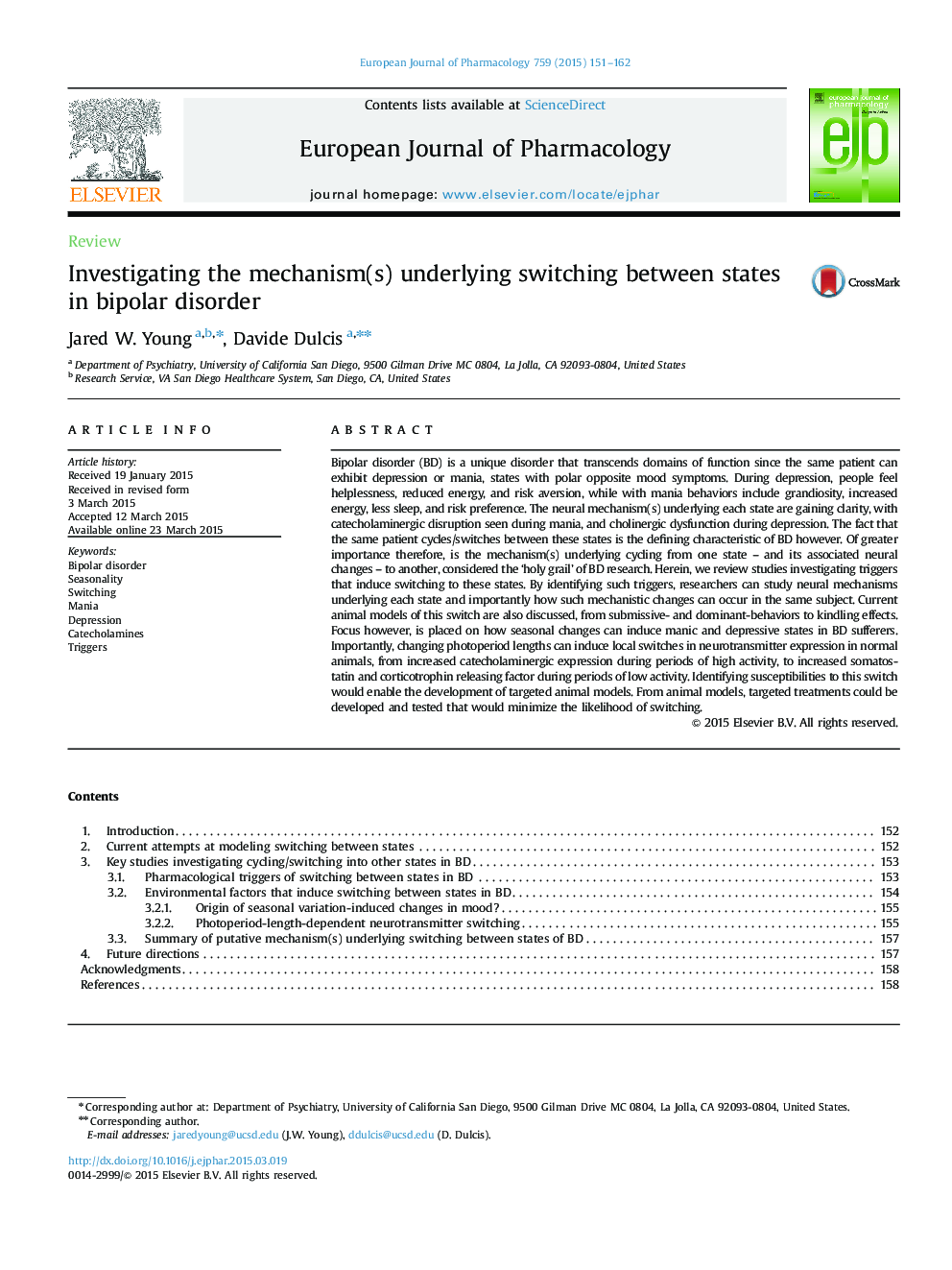| Article ID | Journal | Published Year | Pages | File Type |
|---|---|---|---|---|
| 5827291 | European Journal of Pharmacology | 2015 | 12 Pages |
Bipolar disorder (BD) is a unique disorder that transcends domains of function since the same patient can exhibit depression or mania, states with polar opposite mood symptoms. During depression, people feel helplessness, reduced energy, and risk aversion, while with mania behaviors include grandiosity, increased energy, less sleep, and risk preference. The neural mechanism(s) underlying each state are gaining clarity, with catecholaminergic disruption seen during mania, and cholinergic dysfunction during depression. The fact that the same patient cycles/switches between these states is the defining characteristic of BD however. Of greater importance therefore, is the mechanism(s) underlying cycling from one state - and its associated neural changes - to another, considered the 'holy grail' of BD research. Herein, we review studies investigating triggers that induce switching to these states. By identifying such triggers, researchers can study neural mechanisms underlying each state and importantly how such mechanistic changes can occur in the same subject. Current animal models of this switch are also discussed, from submissive- and dominant-behaviors to kindling effects. Focus however, is placed on how seasonal changes can induce manic and depressive states in BD sufferers. Importantly, changing photoperiod lengths can induce local switches in neurotransmitter expression in normal animals, from increased catecholaminergic expression during periods of high activity, to increased somatostatin and corticotrophin releasing factor during periods of low activity. Identifying susceptibilities to this switch would enable the development of targeted animal models. From animal models, targeted treatments could be developed and tested that would minimize the likelihood of switching.
